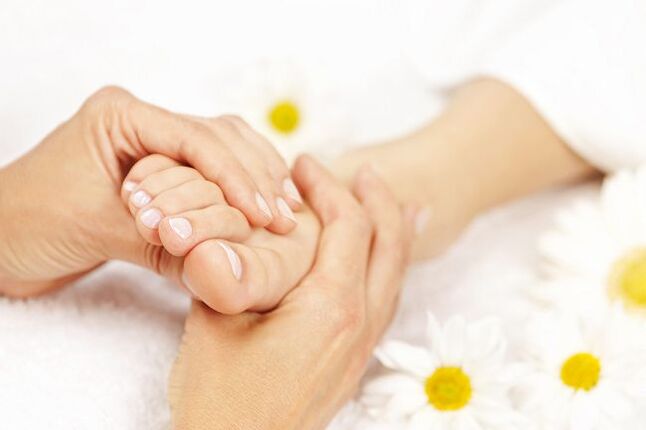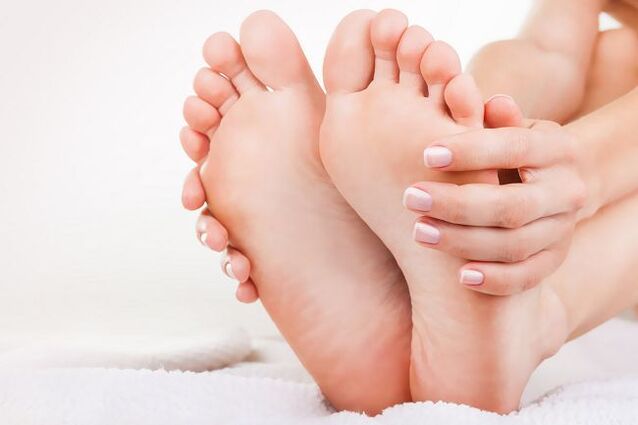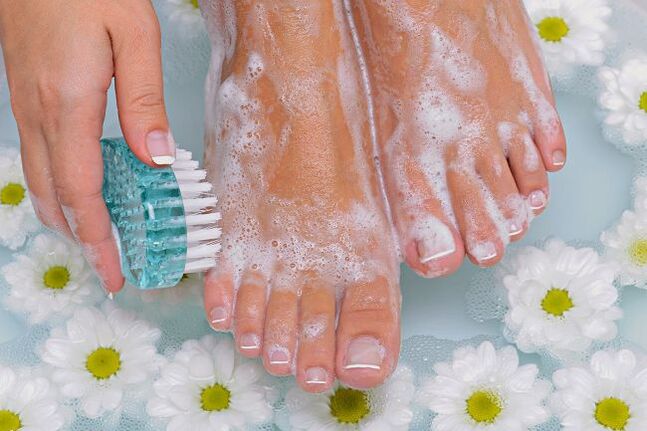You'd be surprised, but according to statistics, fungal disease is one of the most common diseases, and the most common nail infection is shingles. From your point of view, it's a very distant thing, and it won't affect you in any way.According to medical data, every tenth of the planet's inhabitants suffers from a similar disease.
How to be one of the 9 lucky ones and not let your hands and feet be affected by so much trouble? Why does the disease arise and how does it manifest itself? How to get rid of nail fungus at home? What is the best treatment for toenail fungus? Proven methods for antimicrobials and traditional medicine methods.
Diseases: Causes and Symptoms

Onychomycosis, also known as dermatophyte onychomycosis, also known as shingles, is a fungal infection of the nail plate. Often, infections are confused with non-fungal metamorphosis, psoriasis, and eczema. This can be clarified through laboratory studies. It is possible to treat nail fungus at home, but the cunning infection is difficult to affect, recurring and inflammatory processes.
Doctors distinguish the following among the main causes of diseases of the hands and feet:
- A humid and warm environment becomes a breeding ground for hand and foot fungi and other microorganisms. Thoroughly dry wet shoes and use socks made of natural materials.
- decrease in immunity. Sometimes just walking on feet is enough to get infected. Vitamins, hardening and a godly attitude to health will help strengthen the immune system.
- Active spores, easily infected in public areas. Entering the spaces between the nails and fingers, they can lie dormant for long periods of time, waking up suddenly and spreading at a rate of instant failure. Do not try them on under any circumstances, let alone wear someone else's shoes. Danger can wait for you in swimming pools, saunas, baths, showers in fitness centers.
- put up. This is especially true for lovers of luxury manicures. The fact is that the extension causes microcracks to appear on the surface of the fingernail. Once inside, the infection is firmly anchored and hosted, resulting in lesions. Doctors recommend extending surgery at most every 6 months, so you are more likely to avoid getting fungus on your hands.

You can identify fungus on your hands and feet at home and learn about the symptoms of the problem. The nails will start to thicken, or conversely, become brittle and thin. Not only will they start tearing at the edges, but they will also start tearing across the entire surface of the nail plate. Forms will begin to deform and structures will become scaly.
At first, it can be noticed that the gloss and elasticity have disappeared. Darkening happens frequently, which of course should alert you. Common problems like subcutaneous ingrowth can also be symptoms of fungus.
In the context of infection, the digestive organs may also be affected, in particular dysbiosis, general fatigue, decreased physical strength, lethargy and decreased immunity are observed to be characteristic. In children, fungal diseases are easily identified by an itching sensation between the toes. The skin around the nails and on the feet can crack into blood, causing pain. Rash often occurs. The color of the nail plate changes from pink to yellow.
How to get rid of troubles?
Official Medicines offer several treatments for hand and foot fungus. Please be patient, as treating nail fungus is a long and costly process. Outline the best techniques on how to effectively treat onychomycosis at home, especially for you.
Most likely, your doctor will recommend treating this nuisance with an oily and lacquer-like antifungal medication. In the initial stages, you need this treatment for toenail fungus.

It effectively fights the lesions, showing visible results after only 7 days. After cleaning the nail surface from the previous layer of medicated antifungal varnish or oil, apply the medicine at home to the nails daily.
Topical antifungal medications, such as creams and solutions, are no less effective than them.
They are more suitable for complex treatment of fungi, coupled with oral medications designed to treat or prevent various forms of Candida. Oral medications, i. e. taken internally, are very effective against fungi.

These drugs are great for treating fungal infections. However, if the condition is sufficiently ignored, only combination treatment options, including lotions, gels, ointments, and other nail treatments, can help at home.
If severe lesions develop, you will have to seek help from a surgeon. Lime and treatment at home is not possible if the fungus has taken root. Nails are likely to be removed. Among modern methods, temperature programs, cryotherapy, acid disinfection and laser sterilization are recommended. Remember that in addition to hoping to get rid of the disease, you will also experience damage to the skin under the nail plate.
Alternative recovery
Traditional medicine is always ready to provide natural analogues to solve any problem. To treat nail fungus at home, you can:
- iodine.
- garlic.
- Bitchy.
- Celandine.
- coffee.
- bow.
- soda.
- Laundry soap.
Applying an iodine solution to the surface of the nail plate and surrounding skin twice a day can dry out and destroy growing spores. A well-established remedy for fungus is vinegar.
Apple cider vinegar is a folk recipe that can save you a lot of trouble, and nail fungus is no exception.

Rub your nails with vinegar twice a day for a week and you'll notice the first noticeable changes. For 4-5 liters of water, 250 ml of vinegar is enough. You can pour a bowl of cold water, add apple cider vinegar, and leave the legs there for a little bit. In addition to fighting fungal infections, this method also does a great job of dealing with excessive sweating on your feet and the unpleasant odor that comes with it.
Reviews say that vinegar is also used as a component of therapeutic compresses. You need to mix 1 cup of vinegar with 1 egg and 150 ml of butter. Take the resulting porridge-like mixture out of the refrigerator overnight, then apply it to the fungus on your nails and adjacent areas in the morning.
Treating fungus with celandine is as effective as removing warts with it. Apply the liquid squeezed from the plant to the affected area. After a week of daily use, it is recommended to wait five days before starting the operation.
Did you know that coffee can handle the spread of fungus? You can win the battle against aggressive yeast with a cup of espresso. Brew a glass of spirit, wait for it to cool to an acceptable temperature, and then lower your arms or legs for a few minutes. Improvements won't keep you waiting. After more than a dozen processes, there is no trace of the fungus.
A chopped onion mask and a spoonful of honey can do wonders and rescue from fungus within a few days. Apply the bump to the inflamed area and surrounding area, cover, and leave for several hours. After a week of daily use, you can say goodbye to fungal symptoms.
For children who are itching due to a fungal infection, soda can help. This gentle nail care is not only suitable for children, but even pregnant and breastfeeding women. One teaspoon of baking soda is one tablespoon of water. The affected surface is treated with this bump at the first symptoms of onychomycosis.

General advice
Don't rush into rejoicing when you've recovered. You're still the gossip with a fungal infection because you haven't had time to fully recover from onychomycosis. Effective preventive measures now play a key role.
Using antibiotics increases the risk of developing fungal infections, so try not to use them unless absolutely necessary. Burns and frostbite can also cause fungal diseases. Therefore, prompt treatment will help avoid the active spread of yeast.
Remember that you will not only need to treat the affected area, but also clean the surrounding space of the fungus. This means that general cleaning is essential. Thoroughly disinfect all surfaces and objects you touch.
As effective as traditional medicine is, nothing is more reliable than consulting a professional. Do not self-medicate. Your doctor will prescribe this or that medicine, and will most likely recommend some folk methods.
A common mistake with nail fungus is applying varnish to hide the defect. Know that doing so will only make the situation worse. By covering up flaws, you are not addressing the problem that needs treatment.
A good infection prevention measure is to regularly wash your hands and feet with peppermint soup. You can also add strings, chamomile, and other herbs.
Fungus is contagious, so smartly communicate the problem to your family so they can be more mindful of themselves and stay healthy. In this case, the prevention methods described above will be more appropriate than ever.
There are many ways to treat nail fungus. Which one to choose first, only the doctor will tell. Do not start the fungus.It's better to use folk or medical methods early on than to do it in the operating room with a surgeon.
Don't get yourself into a serious situation, don't varnish the fungus, don't ignore the disease. After transferring the fungus, precautions should be taken that will help avoid future infections.

















